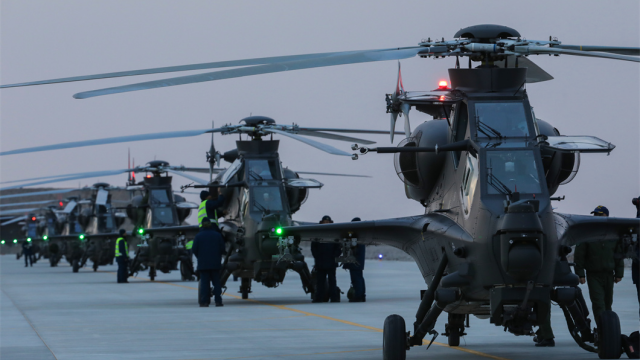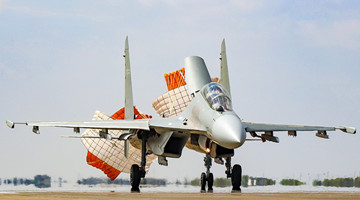By Xu Lin
With alike thought, we feel not far away from each other though separated by sea and mountains.
On October 30, the guided-missile destroyer Wuhan (Hull 169) and the guided-missile frigate Yuncheng (Hull 571) of the Chinese PLA Navy left Malaysia's Port Swettenham for China, after completing the exercise subjects both at the port and maritime phases with the Malaysian Navy. Meanwhile, the participating ground troops also returned to China by transport aircraft after successfully completing all subjects of the exercise.
As the first joint military exercise held by China, Malaysia, and Thailand, the “Peace and Friendship 2018” was held from October 20 to October 29 in Malaysia's Port Dickson of Negeri Sembilan, which is close to the Malacca Strait, as well as in the Port Klang and the offshore area of Selangor.
Demonstrate China’s determination to maintain regional peace and stability
The exercise carried out in areas near the Malacca Strait on the one hand shows the willingness of the Chinese, Malaysian, and Thai militaries to further consolidate mutual pragmatic exchanges and cooperation to enhance the ability to jointly respond to various security threats. On the other hand, it demonstrates the common will of the three parties to maintain peace and stability in the South China Sea.
This year’s exercise is the fourth routine joint drill of the "Peace and Friendship" exercise series. Previously, China and Malaysia held one joint table-top exercise and two joint realistic exercises from 2014 to 2016. This year, with the official participation of Thailand, the Peace and Friendship series of joint military exercises have been expanded from bilateral to multilateral ones.
"I am very proud to be able to participate in this joint exercise," said the Chief of the Directorate of Joint Operations of Royal Thai Armed Forces. "Through exchanges in tactics, experience, and other fields, Chinese and Thai militaries will be able to cooperate better in the future."
Mixed grouping and unified planning have not only enhanced the friendship among the three countries, but also effectively enhanced the ability of the three militaries to cope with regional crises and maintain peace.
Lieutenant General Ma Yiming, deputy chief of the Joint Staff Department of China’s Central Military Commission (CMC), said that the exercise fully demonstrated the ability of the three militaries to carry out deep cooperation, joint planning, and precise actions, and reflected the firm determination of the three countries to strengthen their defense capabilities, effectively respond to non-traditional security threats, and maintain regional security and stability.
Both Malaysia and Thailand are important member states of the Association of Southeast Asian Nations (ASEAN). The enhancement of China-Malaysia-Thailand relations will undoubtedly promote the development of China-ASEAN relations.
This year marks the 15th anniversary of the establishment of China-ASEAN strategic partnership. Along with the joint exercise “Peace and Friendship 2018” waged in full swing, the first China-ASEAN Joint Maritime Exercise-2018 was also launched in waters near Zhanjiang, a port city in south China’s Guangdong Province.
Deepening China-ASEAN security cooperation is in line with the common interests of the ASEAN countries, China, and other countries. Furthermore, it will be conducive to eliminating interference and influence from external forces, jointly safeguarding peace and stability in the South China Sea.
Improve actual combat level of participating troops effectively
It is still hot in Malaysia in October, and the climatic conditions of high temperature and high humidity render the jungle dense here. After the three-day and two-night jungle survival training jointly and consecutively conducted by the special operations forces from the three sides, Lei Wen and his teammates from the Chinese special operations forces walked out of the jungle, with their feet full of blood marks left by grasshoppers.
"The Malaysian special operations members are good at jungle survival skills, lots of which are worth for us to learn. This training experience is unforgettable," said Lei Wen. Malaysian soldiers were accurate in identifying plants in the jungle and could quickly find food to eat and medicinal materials for wounds, which had delivered a lot of inspiration for their Chinese counterparts, Lei added.
“Peace and Friendship 2018” is the first joint military exercise that the PLA Macao Garrison, in which Lei Wen is in service, has participated in abroad since its establishment 19 years ago. Although the Chinese side did adequate adaptive training with higher standards and greater difficulty before going abroad, the officers and soldiers still said that they had learned a lot from their foreign counterparts.
For example, in the jungle survival subject, the Malaysian special operations forces were well aware of how to extract clean water from the trunk of Calamus Formosanus, a kind of plant belongs to the palm tree family.
In the view of Senior Colonel Gao Zhijun, deputy chief of Staff of the PLA Macao Garrison, the training methods of foreign militaries are different from those of Chinese military. Their ways are more flexible and interesting, which are more conducive to mobilizing the enthusiasm of officers and soldiers. What’s more, their ways are simpler and more practical in setting training grounds.
Walking on the streets of Port Dickson, you can see signboards and advertisements in traditional Chinese characters here and there. Even in the military barracks, there are many Chinese with yellow skin and dark eyes. Although Malaysia's Chinese population accounts for more than one-fifth, their way of thinking is very different from that of native Chinese out of historical reasons. This difference is also reflected in the military system and operational thinking, which is characterized by the emphasis on practicality and humanity.
For example, in the design of the barracks, each room in the Peace Village Barracks has two doors so that there is a back-up exit in case of special circumstances. In the design of military uniform, Malaysia’s military jungle camouflage is a good disguise in jungle training.
With the increasing number of joint military exercises and training between Chinese military and foreign militaries, training and preparing for war and seeking to win battles are the essence for the exercises and training. Learning from foreign militaries’ strong points and constantly improving the real combat level are crucial for the Chinese PLA in the future.
(The author is Xu Lin. The article was published on the PLA Daily on October 8, 2018. It is translated from Chinese into English and edited by the China Military online.)









